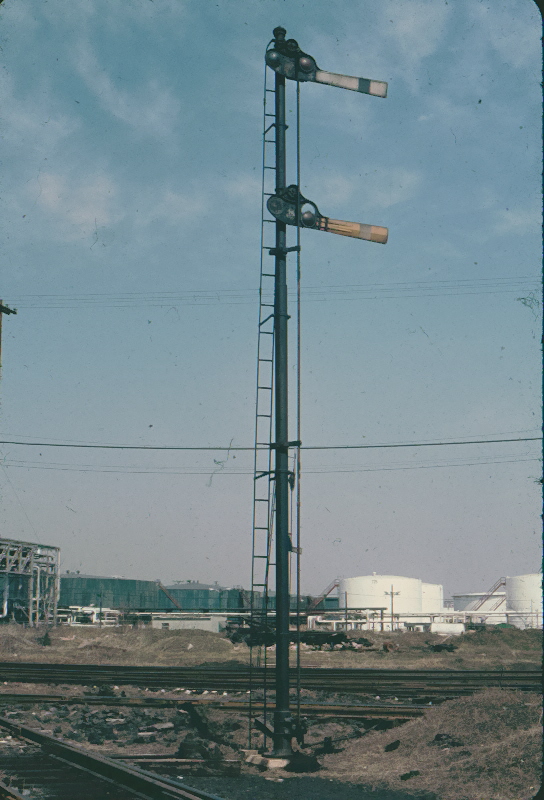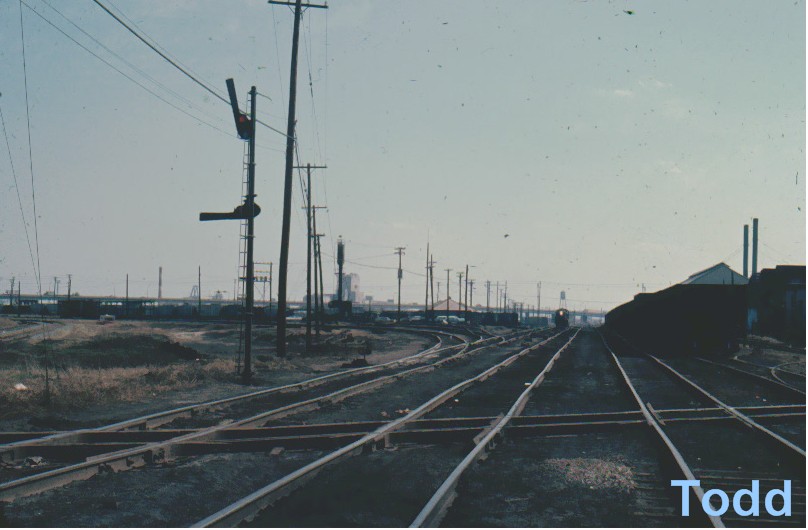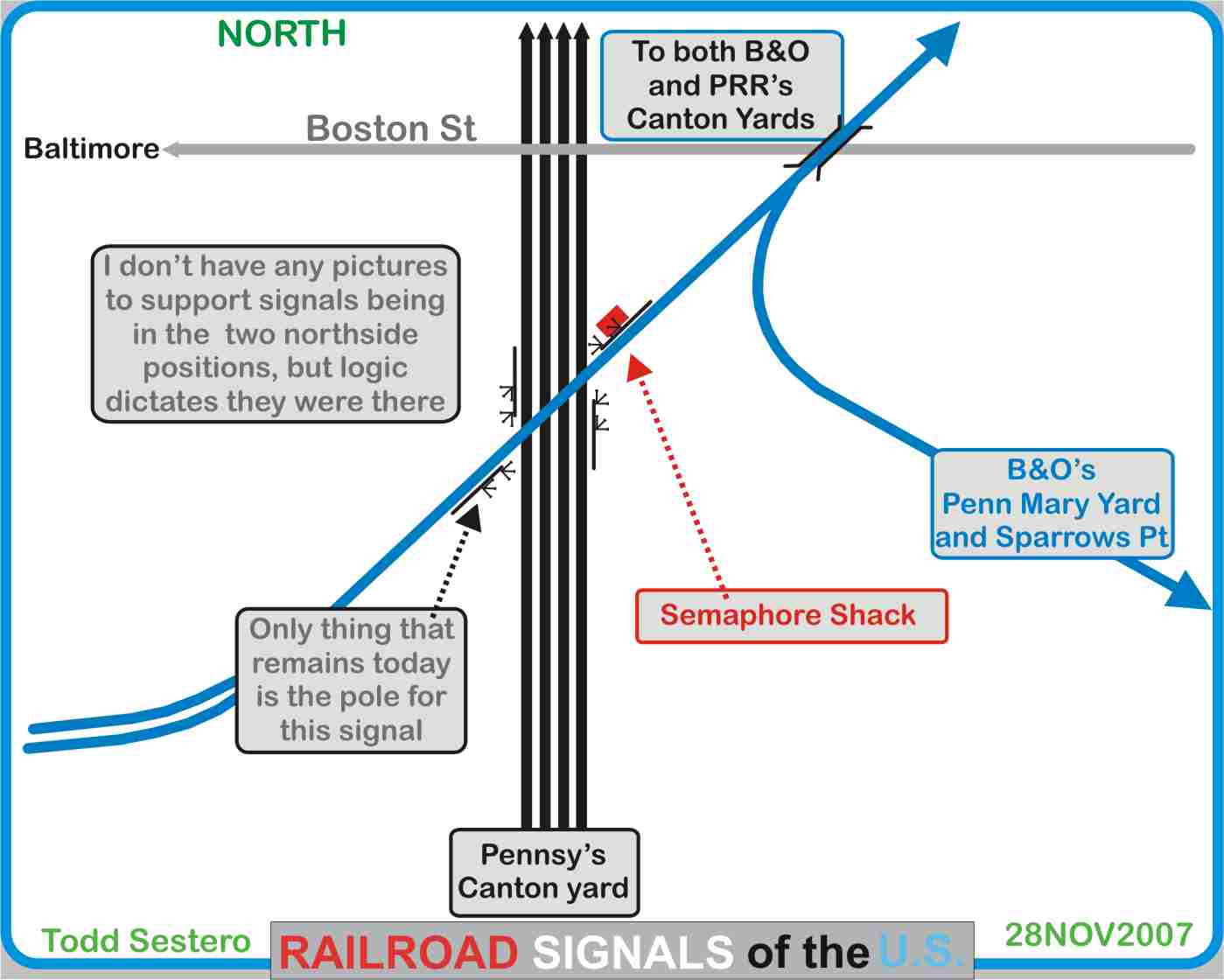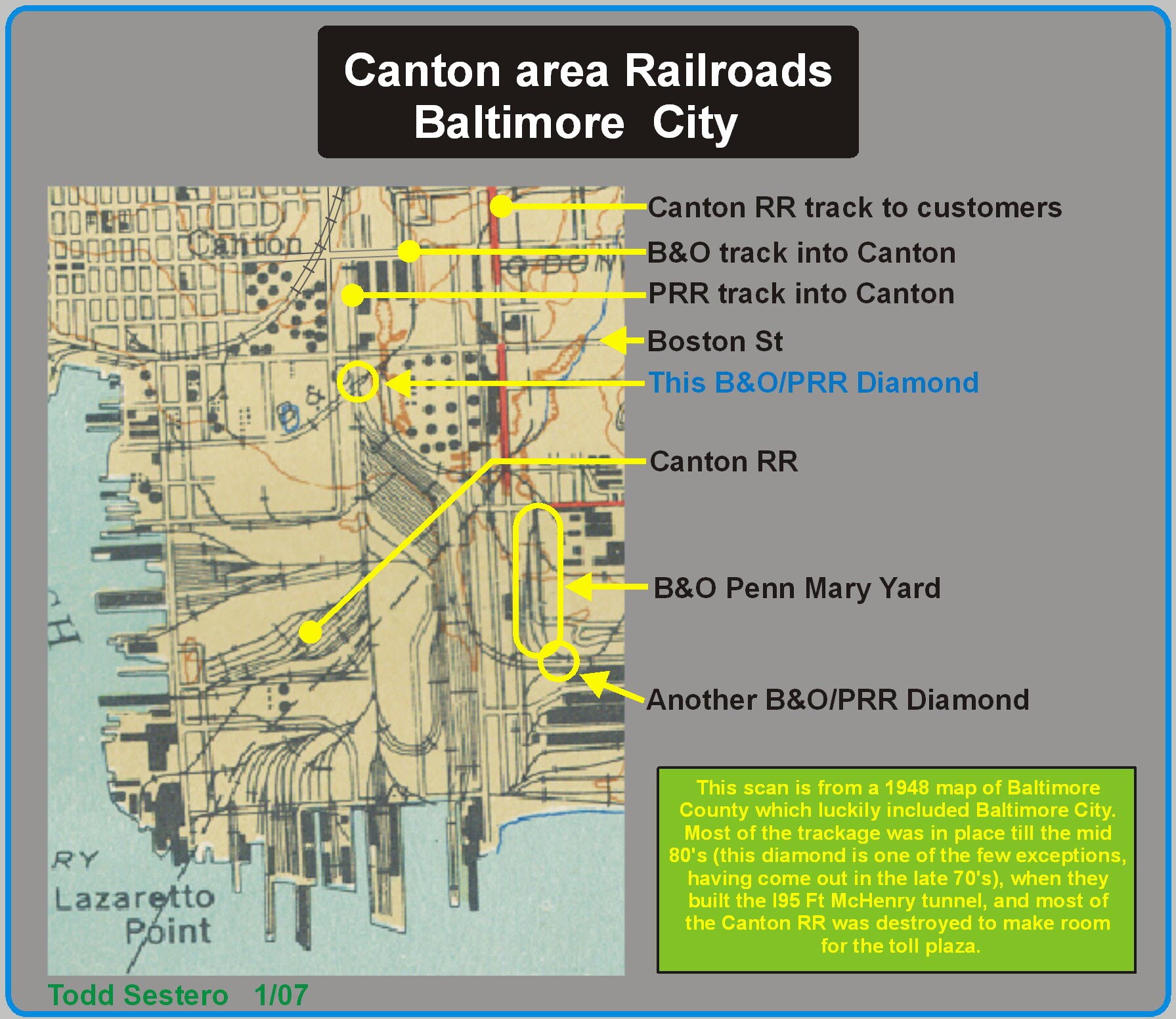
RAILROAD SIGNALS of the U.S.
DIAMOND
CROSSING PROTECTION
B&O crossing the PENNSY
Canton/East Baltimore MD
BALTIMORE RAILFAN GUIDE
RAILFAN GUIDES HOME
RAILROAD SIGNALS HOME
These signals
protected a long gone diamond between the PRR and the B&O in Canton, Baltimore
MD, leftover from the days when the B&O used a car float to get passenger trains
into downtown Baltimore, way before they had their northern route into Camden
Station via Mt Royal and the Howard St Tunnel. The diamond and semaphores
were removed sometime in the 1970's - I guess I was lucky to catch what was
left! The clear board in the bottom photo is for the Pennsy, and the stop
signal in the top photo is an indication for the B&O coming out of the docks.
Unfortunately, these are the only two
pictures I have of them. Since I'm over 50, and suffer from CRS, I'm not
sure, but I'm guessing there were two more for the opposing directions.
According to Michael Watnoski, who grew up in the area and was around here all
the time (lucky him), there was a small shed on the north-east corner of the
diamond (my side of the single track, and to the left in the bottom picture),
where there were four levers for actuating the signals - one for each of the
upper semaphores.
All that remains today, is the mast and ladder for the signal in the upper picture.
The single B&O track was removed, and is now a siding off the far right track of the lower picture. The yard that my back faces in the upper picture, used to be where the Royal Blue was staged in the old, old days before the run around track (current main line) was put in, and they car floated the trains across the harbor to and from Camden station for the trip north to New York.
This area of Baltimore is on MAP 10 of the Baltimore Railfan Guide.




Disclaimers:
I love trains, and I love signals. I am not an expert. I do these pages because I love spending my time doing them - although I do a reasonable amount of research to make sure the information presented is accurate! :-) :-)
Please Note: Since the main focus of my two websites is railroad signals, the railfan guides are oriented towards the signal fan being able to locate them. For those of you into the modeling aspect of our hobby, my indexa page has a list of almost everything railroad oriented I can think of to provide you with at least a few pictures to help you detail your pike.
If this is a railfan page, every effort has been made to make sure that the information contained on this map and in this railfan guide is correct. Once in a while, an error may creep in, oooooooops, oh well! :-)
My philosophy: Pictures and maps are worth a
thousand words, especially for railfanning. Text descriptions only
get you so far, especially if you get lost or disoriented. Take
along good maps.... a GPS is OK to get somewhere, but maps are still
better if you get lost! I belong to AAA, which allows you to get
local maps for free when you visit the local branches. ADC puts
out a nice series of county maps for the Washington DC area, but their
state maps do not have the railroads on them. If you can find em,
I like the National Geographic map book of the U.S..... good, clear, and
concise graphics, and they do a really good job of showing you where
tourist type attractions are, although they too lack the railroads.
Other notes about specific areas will show up on that page if known.
BTW, floobydust is
a term I picked up 30-40 years ago from a National Semiconductor data
book, and means miscellaneous and/or other stuff.
Pictures and additional information is always needed if anyone feels
inclined to take 'em, send 'em, and share 'em, or if you have
something to add or correct.... credit is always given! BE NICE!!! Contact info
is here
Beware: If used as a source, ANYTHING from Wikipedia must be treated as being possibly being inaccurate, wrong, or not true.
RAILFAN GUIDES HOME
RAILROAD SIGNALS HOME
New: 1-14-2007
Mod: 17-Sep-2016